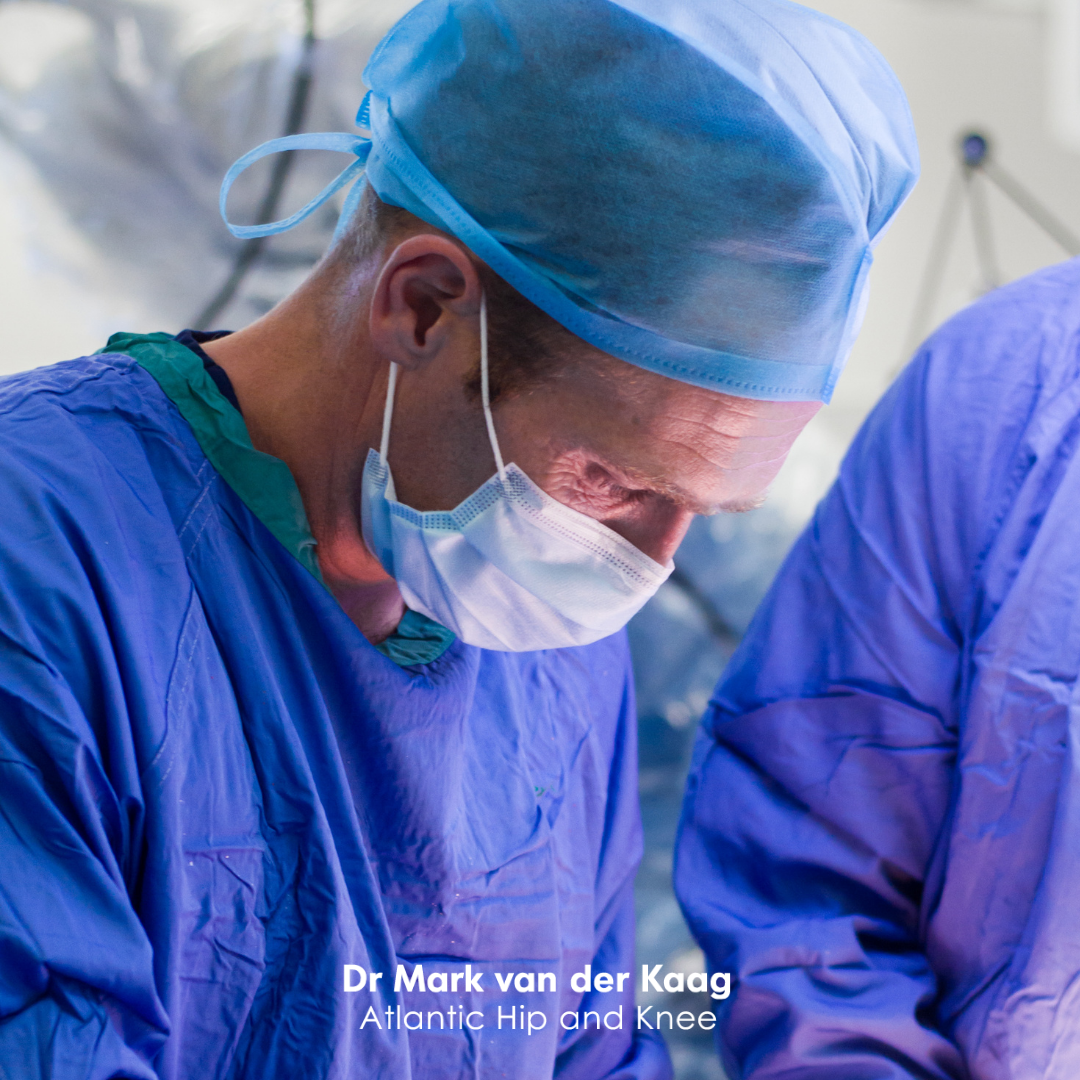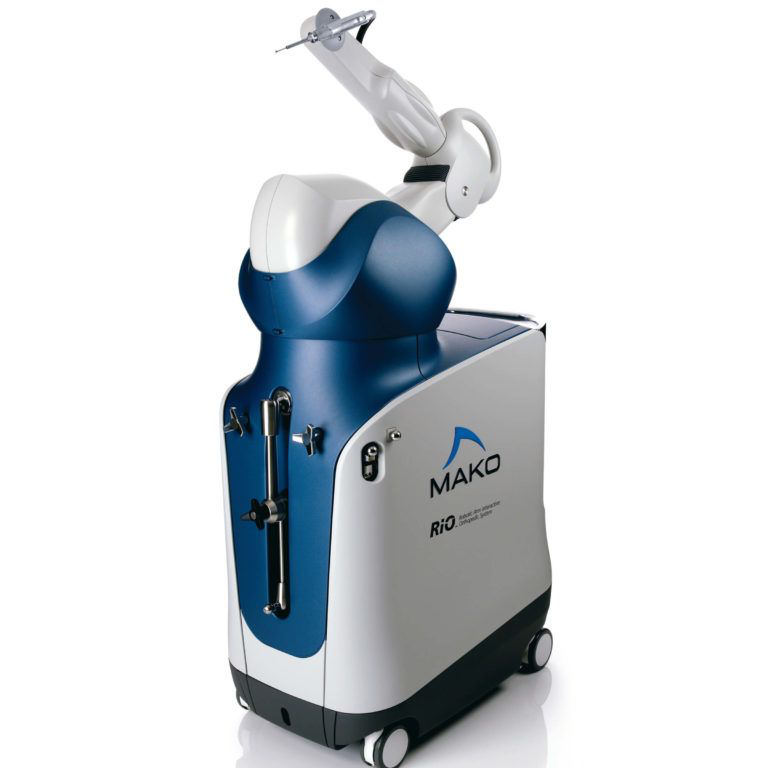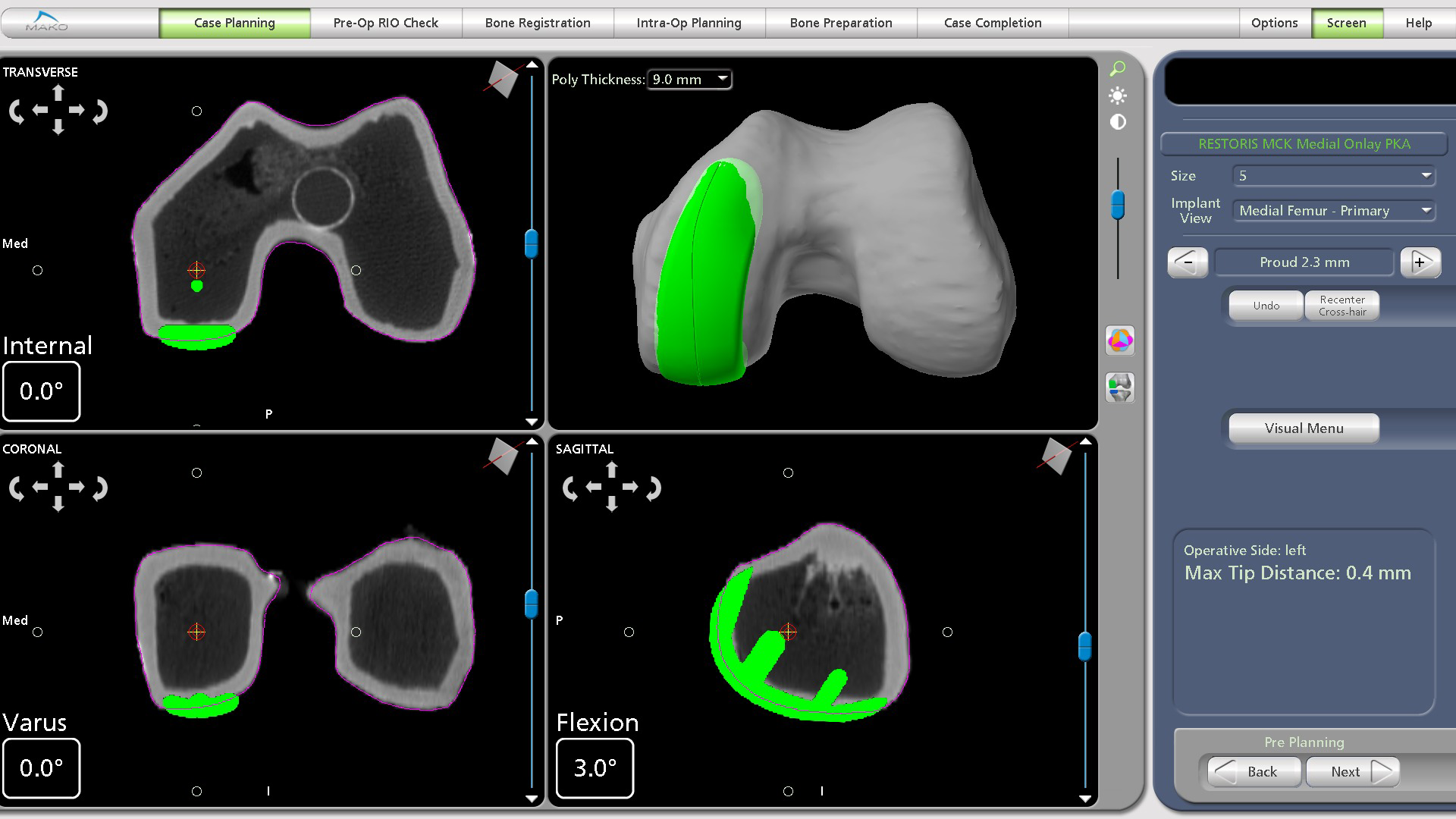Robotic Surgery
If hip or knee pain is keeping you from the activities you love, it may be time to consider total hip replacement, total knee replacement or partial knee replacement. Atlantic Hip and Knee is one of a few practices offering this in South Africa.
How Mako Robotic Technology works
Using Mako Robotic-arm assisted technology, the surgeon develops a unique surgical plan for the patient’s specific anatomy. It begins with a CT scan of the arthritic hip or knee joint which is uploaded into the Mako system software. Following this, a precise 3D model of the affected hip or knee is created on which the surgical procedure and the best implant position is planned preoperatively.
On the day, surgery is performed using this preoperative plan and the Mako robot. The Mako Robotic-arm is guided by the surgeon within the pre-defined areas to prepare the bony surfaces, protect neurovascular and ligamentous structures and allow for implantation of the joint replacement according to the predetermined plan for the best possible results.
What to Expect with Robotic Knee Surgery
When you hear ‘Robotic Surgery,’ do you imagine a robot performing surgery in a procedure room? If so, you are not the only one who is mistaken! A lot of people misunderstand Robotic Surgery as a procedure performed entirely by a robot. A Robotic Surgery certainly involves Robotic Technology, but it does not mean that you won’t be in the good hands of a surgeon before, during, and after the surgery.
So why use Robotic Assistance during surgery?
Robotics technology offers a lot of benefits that make it a great tool for surgeons to use during surgical procedures. Robotics technology is currently being used to perform a variety of procedures, including partial and full knee replacements.
Benefits of Robotic Knee Surgery
Robotic knee surgery is the most advanced joint replacement surgery available to patients today.
The benefits of Robotic Knee Surgery include:
• Improved safety during surgery
• Reduced risk of injury to surrounding healthy tissue
• Greater accuracy in implant positioning
• Customised surgical approach
• Faster recovery period
• Less post-operative pain for patient due to minimally-invasive methods
• An improved long-term function of the replaced joint
What to Expect During the Procedure
When you get Robotic Knee Replacement Surgery, the first step is for your surgeon to use the Mako Robotic System to create a 3D rendering of your knee. This rendering will include features that make your knee unique, including the shape, size, and other details. The benefit of this 3D representation is that it allows for a more accurate understanding of your knee, which gives you a better-performed procedure and effective results.
Next, during the Robotic Knee Replacement Procedure, the surgeon will use the System Technology (3D Rendering and Robotic Arm) to guide the procedure. The Mako Robotic Technology serves as a highly intelligent assistant to the surgeons performing the surgical procedures, helping them with precision and accuracy – which would be difficult to achieve without it.
The Robotic Arm controls some parts of the surgery, such as correctly positioning the blade. The surgeon will also use the Robotic Arm to shape the bones before the implantation procedure. This precision ensures that the surgeon operates in the correct area specifications and performs the procedure with great accuracy. This benefit helps prevent a lot of mistakes from happening.
A Robotic-Assisted Knee Surgery is a minimally invasive procedure. This means the procedure requires less incisions and overall trauma for the patient. Minimally invasive procedures result in shorter hospital stays, less scarring, and faster recovery periods.

Dr. van der Kaag is specially trained to use the Mako Robotic Arm for custom knee and hip replacements. Listen to this informative radio interview about this revolutionary technology!
The Mako Robotic-Arm allows us to provide each patient with a personalized surgical experience that’s specifically tailored to their needs and anatomy. Using a virtual 3D model, the Mako system allows surgeons to design each patient’s surgical plan prior to surgery for more precise implant placement.
Thanks to Bok radio for hosting Dr. Van der Kaag on your show!


